Lior Limonad
Monetizing Currency Pair Sentiments through LLM Explainability
Jul 29, 2024



Abstract:Large language models (LLMs) play a vital role in almost every domain in today's organizations. In the context of this work, we highlight the use of LLMs for sentiment analysis (SA) and explainability. Specifically, we contribute a novel technique to leverage LLMs as a post-hoc model-independent tool for the explainability of SA. We applied our technique in the financial domain for currency-pair price predictions using open news feed data merged with market prices. Our application shows that the developed technique is not only a viable alternative to using conventional eXplainable AI but can also be fed back to enrich the input to the machine learning (ML) model to better predict future currency-pair values. We envision our results could be generalized to employing explainability as a conventional enrichment for ML input for better ML predictions in general.
Towards a Benchmark for Causal Business Process Reasoning with LLMs
Jun 08, 2024Abstract:Large Language Models (LLMs) are increasingly used for boosting organizational efficiency and automating tasks. While not originally designed for complex cognitive processes, recent efforts have further extended to employ LLMs in activities such as reasoning, planning, and decision-making. In business processes, such abilities could be invaluable for leveraging on the massive corpora LLMs have been trained on for gaining deep understanding of such processes. In this work, we plant the seeds for the development of a benchmark to assess the ability of LLMs to reason about causal and process perspectives of business operations. We refer to this view as Causally-augmented Business Processes (BP^C). The core of the benchmark comprises a set of BP^C related situations, a set of questions about these situations, and a set of deductive rules employed to systematically resolve the ground truth answers to these questions. Also with the power of LLMs, the seed is then instantiated into a larger-scale set of domain-specific situations and questions. Reasoning on BP^C is of crucial importance for process interventions and process improvement. Our benchmark could be used in one of two possible modalities: testing the performance of any target LLM and training an LLM to advance its capability to reason about BP^C.
How well can large language models explain business processes?
Jan 23, 2024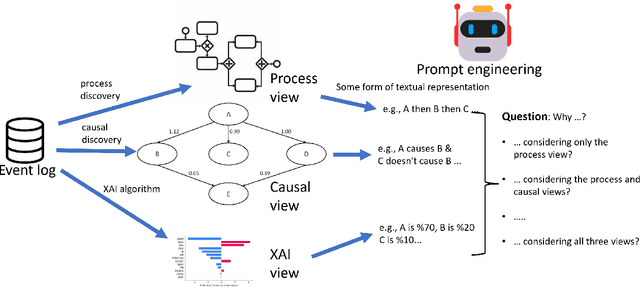
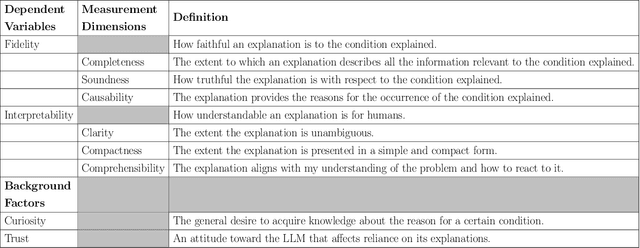
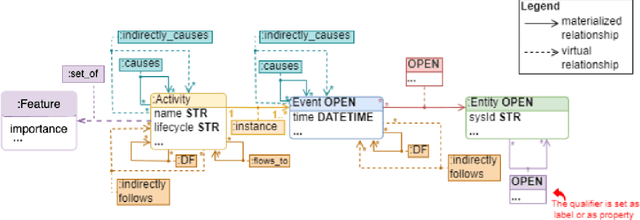
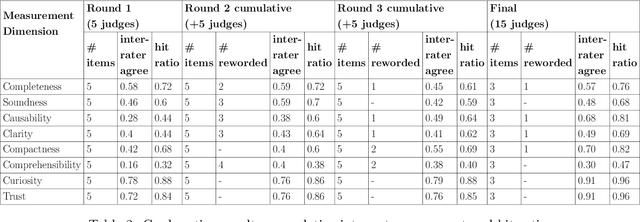
Abstract:Large Language Models (LLMs) are likely to play a prominent role in future AI-augmented business process management systems (ABPMSs) catering functionalities across all system lifecycle stages. One such system's functionality is Situation-Aware eXplainability (SAX), which relates to generating causally sound and yet human-interpretable explanations that take into account the process context in which the explained condition occurred. In this paper, we present the SAX4BPM framework developed to generate SAX explanations. The SAX4BPM suite consists of a set of services and a central knowledge repository. The functionality of these services is to elicit the various knowledge ingredients that underlie SAX explanations. A key innovative component among these ingredients is the causal process execution view. In this work, we integrate the framework with an LLM to leverage its power to synthesize the various input ingredients for the sake of improved SAX explanations. Since the use of LLMs for SAX is also accompanied by a certain degree of doubt related to its capacity to adequately fulfill SAX along with its tendency for hallucination and lack of inherent capacity to reason, we pursued a methodological evaluation of the quality of the generated explanations. To this aim, we developed a designated scale and conducted a rigorous user study. Our findings show that the input presented to the LLMs aided with the guard-railing of its performance, yielding SAX explanations having better-perceived fidelity. This improvement is moderated by the perception of trust and curiosity. More so, this improvement comes at the cost of the perceived interpretability of the explanation.
The WHY in Business Processes: Discovery of Causal Execution Dependencies
Oct 23, 2023Abstract:A crucial element in predicting the outcomes of process interventions and making informed decisions about the process is unraveling the genuine relationships between the execution of process activities. Contemporary process discovery algorithms exploit time precedence as their main source of model derivation. Such reliance can sometimes be deceiving from a causal perspective. This calls for faithful new techniques to discover the true execution dependencies among the tasks in the process. To this end, our work offers a systematic approach to the unveiling of the true causal business process by leveraging an existing causal discovery algorithm over activity timing. In addition, this work delves into a set of conditions under which process mining discovery algorithms generate a model that is incongruent with the causal business process model, and shows how the latter model can be methodologically employed for a sound analysis of the process. Our methodology searches for such discrepancies between the two models in the context of three causal patterns, and derives a new view in which these inconsistencies are annotated over the mined process model. We demonstrate our methodology employing two open process mining algorithms, the IBM Process Mining tool, and the LiNGAM causal discovery technique. We apply it on a synthesized dataset and on two open benchmark data sets.
Mimicking the Maestro: Exploring the Efficacy of a Virtual AI Teacher in Fine Motor Skill Acquisition
Oct 16, 2023Abstract:Motor skills, especially fine motor skills like handwriting, play an essential role in academic pursuits and everyday life. Traditional methods to teach these skills, although effective, can be time-consuming and inconsistent. With the rise of advanced technologies like robotics and artificial intelligence, there is increasing interest in automating such teaching processes using these technologies, via human-robot and human-computer interactions. In this study, we examine the potential of a virtual AI teacher in emulating the techniques of human educators for motor skill acquisition. We introduce an AI teacher model that captures the distinct characteristics of human instructors. Using a Reinforcement Learning environment tailored to mimic teacher-learner interactions, we tested our AI model against four guiding hypotheses, emphasizing improved learner performance, enhanced rate of skill acquisition, and reduced variability in learning outcomes. Our findings, validated on synthetic learners, revealed significant improvements across all tested hypotheses. Notably, our model showcased robustness across different learners and settings and demonstrated adaptability to handwriting. This research underscores the potential of integrating Reinforcement Learning and Imitation Learning models with robotics in revolutionizing the teaching of critical motor skills.
Augmented Business Process Management Systems: A Research Manifesto
Feb 03, 2022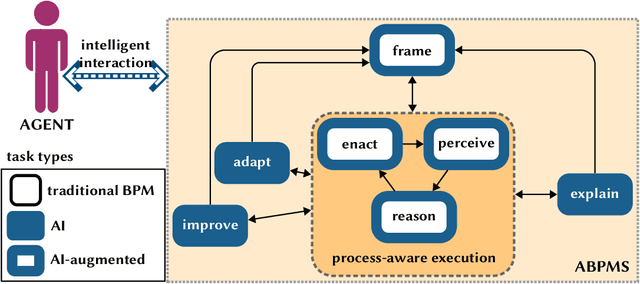
Abstract:Augmented Business Process Management Systems (ABPMSs) are an emerging class of process-aware information systems that draws upon trustworthy AI technology. An ABPMS enhances the execution of business processes with the aim of making these processes more adaptable, proactive, explainable, and context-sensitive. This manifesto presents a vision for ABPMSs and discusses research challenges that need to be surmounted to realize this vision. To this end, we define the concept of ABPMS, we outline the lifecycle of processes within an ABPMS, we discuss core characteristics of an ABPMS, and we derive a set of challenges to realize systems with these characteristics.
Expecting the Unexpected: Developing Autonomous-System Design Principles for Reacting to Unpredicted Events and Conditions
Jan 25, 2020Abstract:When developing autonomous systems, engineers and other stakeholders make great effort to prepare the system for all foreseeable events and conditions. However, these systems are still bound to encounter events and conditions that were not considered at design time. For reasons like safety, cost, or ethics, it is often highly desired that these new situations be handled correctly upon first encounter. In this paper we first justify our position that there will always exist unpredicted events and conditions, driven among others by: new inventions in the real world; the diversity of world-wide system deployments and uses; and, the non-negligible probability that multiple seemingly unlikely events, which may be neglected at design time, will not only occur, but occur together. We then argue that despite this unpredictability property, handling these events and conditions is indeed possible. Hence, we offer and exemplify design principles that when applied in advance, can enable systems to deal, in the future, with unpredicted circumstances. We conclude with a discussion of how this work and a broader theoretical study of the unexpected can contribute toward a foundation of engineering principles for developing trustworthy next-generation autonomous systems.
 Add to Chrome
Add to Chrome Add to Firefox
Add to Firefox Add to Edge
Add to Edge